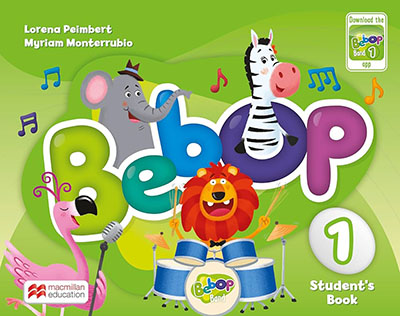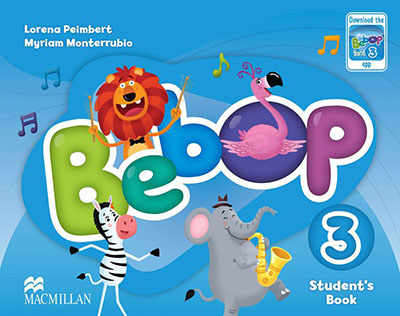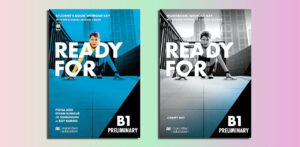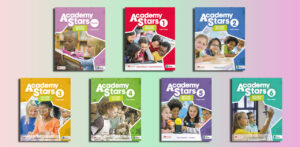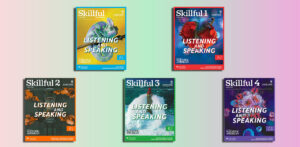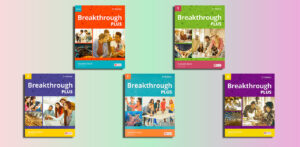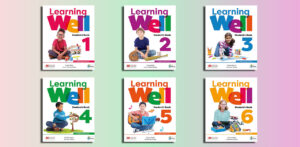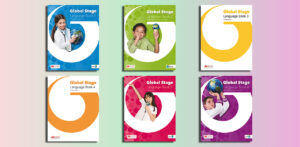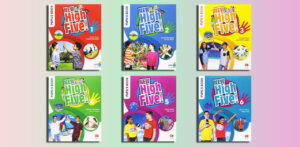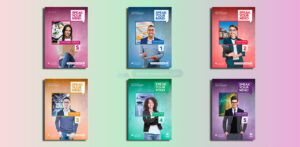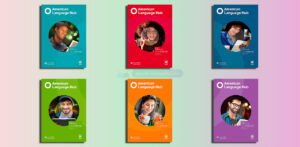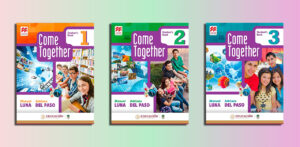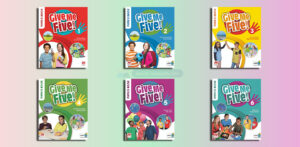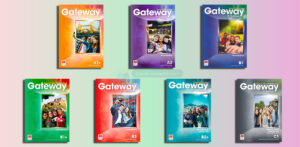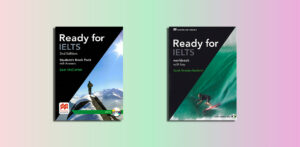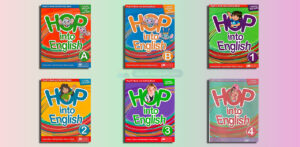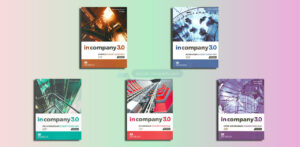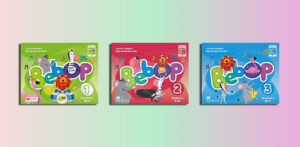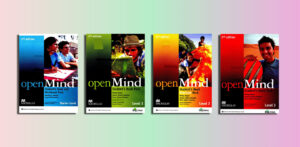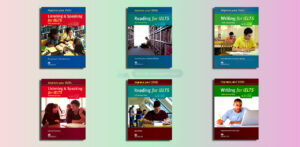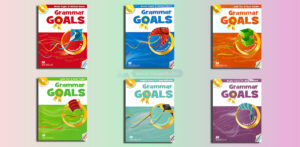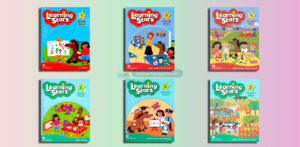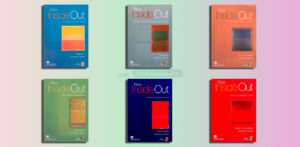Download, Macmillan, Presentation
Download Macmillan Bebop Pdf Presentation Kit (3 Levels)
Bebop
Presentation Kit (iTools)
Bebop 1 Presentation Kit DVD-ROM
Bebop 2 Presentation Kit DVD-ROM
Bebop 3 Presentation Kit DVD-ROM
PDFs, Resources
Level 1
Activity Book – Audio – Resources – Student’s Book – Video
Activity Book.pdf – Sample: Click
Student’s Book.pdf – Sample: Click
Level 2
Activity Book – Audio – Resources – Student’s Book – Video
Activity Book.pdf – Sample: Click
Student’s Book.pdf – Sample: Click
Level 3
Activity Book – Audio – Resources – Student’s Book – Video
Activity Book.pdf – Sample: Click
Student’s Book.pdf – Sample: Click
Overview of the “Bebop” by Macmillan
Contents
| ✅ Coursebook: | Bebop |
| ✅ Authors: | Lorena Peimbert and Myriam Monterrubio |
| ✅ Publisher: | Macmillan Education |
| ✅ Level: | Preschool |
| ✅ English type: | American English |
| ✅ Publication year: | 2014 |
Bebop is a three-level pre-primary English language course by Macmillan Education, designed for young learners aged 3 to 6. It adopts a multi-sensory, whole-child approach to teach English through music, movement, and play, ensuring an engaging and inclusive learning experience. Written by respected authors Lorena Peimbert and Myriam Monterrubio, the course integrates innovative teaching methods to foster language acquisition, social-emotional skills, and early literacy.
Key Features
Multi-Sensory Approach:
- Combines visual, auditory, and kinesthetic learning to cater to diverse learning styles.
- Uses American Sign Language (ASL) to support vocabulary retention through gestures, enhancing kinesthetic learning.
- Incorporates Total Physical Response (TPR) activities, with movements like those in Action Songs to reinforce language through physical activity.Music and Storytelling:
- Features the Bebop Band characters (Leo, Eddy, Flo, Susie) who bring language to life through engaging stories and songs.
- Includes Mini-songs, Storysongs, and Action Songs in each unit to present vocabulary in meaningful contexts and create a fun learning atmosphere.
- Songs support musical development and language retention by aligning with the intonation of spoken English.
Course Structure:
- Each level consists of eight topic-based units, with eight lessons per unit.
- Lessons integrate big illustrations, songs, dialogues, and cut-out puppets to present language visually, aurally, and kinesthetically.
- Early literacy, math, and psychomotor skills are developed alongside language learning.
Digital and Interactive Components:
- Bebop Band App: Available for free on iOS and Android, it includes songs, video flashcards, and 32 interactive games per level to reinforce vocabulary and skills. Parents can use it to support learning at home.
- Navio App: Offers gamified activities in immersive 3D worlds, providing instant feedback and rewards to motivate learners.
- Teacher’s Resource Centre: Accessible via a code in the Teacher’s Book, it provides assessment tools, worksheets, and digital resources.
- Presentation Kit: Integrates Student’s Book and Activity Book pages with multimedia for dynamic lessons.
Inclusive and Value-Driven:
- The Bebop and Friends extension promotes global values and social-emotional skills through “Explore the World” lessons, fostering inclusivity and emotional growth.
- Activities encourage collaboration and diversity, ensuring every child feels included.
Teacher and Parent Support:
- Teacher’s Editions: Spiral-bound, interleaved with Student’s Book pages, and include detailed guidance on classroom management, TPR, ASL, and musical development.
- Parent’s Guide: Helps parents practice English with their children outside the classroom.
- Flashcards and Videos: Support vocabulary introduction and include Storysong and Action Song videos for in-class or home use.
Pedagogical Approach
- Emphasizes a playful, music-driven methodology to build confidence in English communication.
- Supports early literacy through storytelling and songs, presenting language in familiar contexts.
- Encourages parental involvement via the Bebop Band App and Parent’s Guide, bridging classroom and home learning.
Why Bebop Stands Out
Bebop creates an inclusive, engaging classroom by combining music, movement, and a multi-sensory approach. Its focus on ASL, TPR, and digital tools makes it innovative, while its emphasis on global values and social-emotional learning prepares young learners for both language proficiency and personal growth. The course’s flexibility supports in-class, blended, or online teaching, making it adaptable to various educational needs.
Bebop 1 Student’s Book
Who is suitable for “Bebop”?
Bebop is designed for young learners aged 3 to 6 in pre-primary education, typically in preschool or kindergarten settings. It is suitable for:
Children Learning English as a Second or Foreign Language:
- Ideal for non-native English speakers beginning their language-learning journey.
- The multi-sensory approach (music, movement, visuals, and American Sign Language) supports early language acquisition for young learners with no prior English exposure.
Diverse Learners:
- Caters to various learning styles (visual, auditory, kinesthetic) through songs, storytelling, Total Physical Response (TPR) activities, and interactive digital tools.
- Inclusive design ensures accessibility for children with different abilities, fostering collaboration and diversity in the classroom.
Preschool and Kindergarten Classrooms:
- Perfect for teachers in pre-primary settings looking for a structured, engaging English curriculum.
- The course’s eight-unit structure per level, with clear lesson plans, suits classroom environments, whether in-person, blended, or online.
Parents Supporting Home Learning:
- Parents of young learners can use the Bebop Band App and Parent’s Guide to reinforce English skills at home through songs, games, and video flashcards.
- Suitable for parents seeking to engage their children in fun, educational activities that promote language and social-emotional development.
Teachers Seeking Flexible Resources:
- Appropriate for educators who need a comprehensive, ready-to-use course with digital tools (Navio App, Presentation Kit) and teacher support (Teacher’s Resource Centre, flashcards).
- Works for both novice and experienced teachers due to detailed guidance on classroom management, TPR, and ASL integration.
Learners Developing Holistic Skills:
- Beyond language, Bebop fosters social-emotional skills, early literacy, math foundations, and psychomotor development, making it suitable for children needing a well-rounded pre-primary curriculum.
- The Bebop and Friends extension promotes global values, ideal for children learning about inclusivity and collaboration.
In summary, Bebop is best suited for 3- to 6-year-old children, their teachers, and parents in pre-primary settings, particularly those seeking an engaging, inclusive, and multi-sensory English learning experience that supports both language and personal development.
Bebop 2 Student’s Book
The benefits of “Bebop”
Bebop, a three-level pre-primary English course by Macmillan Education for children aged 3–6, offers numerous benefits through its multi-sensory, music-driven, and inclusive approach. Below are the key advantages for learners, teachers, and parents:
For Young Learners
Engaging Language Acquisition:
- Uses music, storytelling, and American Sign Language (ASL) to make learning English fun and memorable, enhancing vocabulary retention and pronunciation.
- Total Physical Response (TPR) activities, like Action Songs, link physical movement to language, reinforcing comprehension and confidence in speaking.
Holistic Development:
- Fosters early literacy through stories and songs, building foundational reading and writing skills.
- Develops math skills and psychomotor abilities through integrated activities, supporting cognitive and physical growth.
- Promotes social-emotional skills via collaborative tasks and the Bebop and Friends extension, teaching values like inclusivity, empathy, and teamwork.
Catering to Diverse Learners:
- Multi-sensory approach (visual, auditory, kinesthetic) accommodates various learning styles, ensuring all children, including those with different abilities, can participate and succeed.
- Big illustrations, puppets, and interactive games keep young learners engaged and motivated.
Confidence Building:
- Playful, low-pressure activities create a safe environment for children to experiment with English, boosting self-esteem and communication skills.
- Familiar contexts (e.g., Bebop Band characters) make language relatable, encouraging active participation.
For Teachers
Comprehensive and Flexible Resources:
- Structured eight-unit curriculum with clear lesson plans simplifies teaching, saving preparation time.
- Digital tools like the Presentation Kit and Navio App enable dynamic, interactive lessons adaptable to in-person, blended, or online settings.
- Teacher’s Resource Centre provides assessments, worksheets, and multimedia, streamlining classroom management.
Professional Support:
- Teacher’s Editions offer detailed guidance on TPR, ASL, and musical development, benefiting both novice and experienced educators.
- Flashcards, videos, and Storysong/Action Song resources enhance vocabulary introduction and lesson delivery.
Inclusive Classroom Environment:
- Activities promote diversity and collaboration, helping teachers create a welcoming space for all students.
- The course’s focus on global values supports teaching social-emotional skills alongside language.
For Parents
Home Learning Support:
- The Bebop Band App (free on iOS/Android) offers songs, 32 interactive games per level, and ASL video flashcards, enabling parents to reinforce English at home.
- The Parent’s Guide provides practical tips to engage children in language practice, strengthening parent-child bonding through educational play.
Motivating and Accessible:
- Fun, gamified activities in the Navio App keep children excited about learning outside the classroom.
- Parents can track progress through app feedback, ensuring alignment with classroom goals.
Broader Educational Benefits
Innovative Methodology:
- Integrates ASL and TPR, which are proven to enhance memory and language acquisition, setting Bebop apart from traditional courses.
- Music-driven approach aligns songs with spoken English intonation, aiding natural language development.
Preparation for Future Learning:
- Builds a strong foundation in English, literacy, and social skills, preparing children for primary school.
- Encourages a love for learning through play, fostering lifelong curiosity and engagement.
Scalable and Modern:
- Digital components (apps, online platforms) align with modern educational trends, making Bebop relevant for tech-savvy classrooms and homes.
- Supports global education standards by embedding values and skills essential for 21st-century learners.
Summary
Bebop benefits young learners by making English fun, inclusive, and developmentally enriching, while equipping teachers with flexible, high-quality resources and empowering parents to support learning at home. Its innovative use of music, ASL, TPR, and digital tools ensures engagement, accessibility, and long-term educational impact, preparing children for both academic and personal success.
Bebop 3 Student’s Book
Effective learning strategies for “Bebop”
Bebop is a three-level pre-primary English course for children aged 3–6, designed with a multi-sensory, music-driven, and inclusive approach. To maximize its effectiveness, teachers, parents, and learners can adopt the following strategies tailored to its unique features, such as American Sign Language (ASL), Total Physical Response (TPR), songs, storytelling, and digital tools.
For Teachers
Leverage Multi-Sensory Activities:
- Strategy: Combine visual (illustrations, puppets), auditory (songs, dialogues), and kinesthetic (TPR, ASL) elements in each lesson to engage diverse learners. For example, introduce vocabulary with flashcards, reinforce it with an Action Song, and practice using ASL gestures.
- Why It Works: Bebop’s multi-sensory approach caters to different learning styles, enhancing retention and participation for young learners.
Incorporate TPR and Movement:
- Strategy: Use TPR activities, such as those in Action Songs, to link physical movements with language. Encourage children to act out vocabulary (e.g., “jump” or “clap”) during songs or games.
- Why It Works: TPR reinforces language through muscle memory, making abstract words concrete and boosting confidence in shy learners.
Use Songs and Storytelling as Core Tools:
- Strategy: Play Mini-songs, Storysongs, and Action Songs multiple times to reinforce vocabulary and grammar. Pause to explain key words or phrases, and use Storysong videos to contextualize narratives.
- Why It Works: Songs align with English intonation, aiding pronunciation, while stories provide meaningful contexts, improving comprehension and recall.
Utilize Digital Resources Effectively:
- Strategy: Integrate the Presentation Kit for interactive whiteboard lessons, showing Student’s Book pages and multimedia. Use the Navio App for gamified practice during class or as homework.
- Why It Works: Digital tools make lessons dynamic, provide instant feedback, and motivate learners through rewards, aligning with Bebop’s playful approach.
Promote Collaborative and Inclusive Learning:
- Strategy: Organize group activities, like role-playing Bebop Band characters or singing in pairs, to foster teamwork. Use Bebop and Friends “Explore the World” lessons to discuss values like sharing or diversity.
- Why It Works: Collaborative tasks build social-emotional skills, while inclusive activities ensure every child feels valued, enhancing engagement.
Scaffold and Differentiate Instruction:
- Strategy: Start with simple vocabulary and gradually introduce complex phrases. For advanced learners, extend activities (e.g., create new verses for songs). Use the Teacher’s Resource Centre for tailored worksheets.
- Why It Works: Scaffolding supports varied proficiency levels, ensuring all learners progress within Bebop’s structured units.
For Parents
Reinforce Learning with the Bebop Band App:
- Strategy: Encourage children to use the Bebop Band App (free on iOS/Android) for 10–15 minutes daily, playing interactive games or watching ASL video flashcards. Sing along with songs to practice at home.
- Why It Works: The app reinforces classroom learning through fun, accessible activities, and ASL videos strengthen vocabulary retention.
- Engage with the Parent’s Guide:
- Strategy: Follow the Parent’s Guide to practice English through everyday activities, like naming objects during playtime or reenacting Storysongs. Use suggested phrases from the guide to model simple English.
- Why It Works: The guide bridges classroom and home learning, making parents active partners in language development.
Create a Playful Learning Environment:
- Strategy: Turn Bebop activities into games, such as acting out Action Songs or using puppets to retell stories. Reward participation with praise or small incentives.
- Why It Works: Play aligns with Bebop’s methodology, reducing pressure and fostering a love for English.
For Learners (Guided by Teachers/Parents)
Active Participation in Songs and Movements:
- Strategy: Encourage children to sing, dance, and mimic ASL gestures during songs. Practice movements at home or in class to build confidence.
- Why It Works: Active involvement reinforces language through repetition and physical engagement, key to Bebop’s design.
Story-Based Vocabulary Practice:
- Strategy: Have children retell Bebop stories using puppets or drawings, focusing on key words. Ask simple questions like “What does Leo do?” to prompt recall.
- Why It Works: Storytelling contextualizes vocabulary, making it easier to remember and use in real-life scenarios.
Gamified Learning with Navio App:
- Strategy: Let children explore the Navio App’s 3D worlds, completing tasks like matching words to images. Set small goals, like finishing one game per session.
- Why It Works: Gamification keeps learners motivated, and instant feedback helps them self-correct, aligning with Bebop’s interactive approach.
General Tips for Maximizing Effectiveness
- Repetition and Routine: Repeat songs, gestures, and stories regularly to build familiarity. Establish a consistent schedule for Bebop activities (e.g., daily app use or weekly story time).
- Positive Reinforcement: Praise effort and progress to boost motivation, especially for hesitant learners, as Bebop emphasizes confidence-building.
- Parental-Teacher Collaboration: Teachers can share unit themes with parents via the Parent’s Guide, ensuring home activities align with classroom goals.
- Adapt to Pace: Allow flexibility in lesson pacing, as young learners vary in attention spans. Short, frequent sessions (15–20 minutes) work best for Bebop’s playful structure.
Why These Strategies Work
These strategies align with Bebop’s pedagogical strengths: its multi-sensory approach (ASL, TPR, visuals), music-driven methodology, and focus on inclusivity and social-emotional growth. By leveraging its resources (apps, songs, teacher tools) and fostering a playful, collaborative environment, learners build a strong foundation in English, literacy, and life skills, while teachers and parents benefit from clear, engaging tools.
Effective teaching strategies for “Bebop”
Bebop is a three-level pre-primary English course for children aged 3–6, designed with a multi-sensory, music-driven, and inclusive approach. The following teaching strategies leverage its core components—American Sign Language (ASL), Total Physical Response (TPR), songs, storytelling, and digital tools—to maximize effectiveness in the classroom.
1. Maximize Multi-Sensory Engagement
- Strategy: Integrate visual (big illustrations, puppets, flashcards), auditory (songs, dialogues), and kinesthetic (TPR, ASL gestures) elements in every lesson. For example, introduce a unit’s vocabulary with flashcards, reinforce it with a Storysong, and practice using ASL signs.
- Implementation: Begin a lesson with a large illustration from the Student’s Book to spark curiosity, play the corresponding Mini-song, and guide students to mimic ASL gestures for key words (e.g., “dog” or “run”).
- Why It Works: Bebop’s multi-sensory design caters to diverse learning styles, enhancing retention and engagement for young learners with short attention spans.
2. Utilize TPR and Movement-Based Activities
- Strategy: Incorporate TPR activities, particularly Action Songs, to connect physical movements with language. Encourage students to act out verbs or concepts (e.g., “jump,” “clap”) during songs or games.
- Implementation: During an Action Song, model movements first, then have students follow along in small groups. Extend by creating a “movement circle” where each child adds a new action.
- Why It Works: TPR links language to muscle memory, making vocabulary concrete and supporting shy learners by reducing verbal pressure.
3. Center Lessons Around Songs and Storytelling
- Strategy: Use Mini-songs, Storysongs, and Action Songs as the backbone of lessons to present and practice language. Pause songs to explain key words and use Storysong videos to contextualize narratives.
- Implementation: Play a Storysong twice—first for listening, then for singing along. Follow with a storytelling activity where students use puppets to retell the story in simple phrases.
- Why It Works: Songs align with English intonation, aiding pronunciation, while stories provide meaningful contexts, improving comprehension and long-term recall.
4. Integrate Digital Tools for Interactive Learning
- Strategy: Use the Presentation Kit for interactive whiteboard lessons and the Navio App for gamified practice. Assign app activities as in-class rewards or homework to reinforce vocabulary.
- Implementation: Display Student’s Book pages via the Presentation Kit, clicking embedded audio/videos to engage students. Set up a “Navio station” where small groups rotate to play games on tablets.
- Why It Works: Digital tools make lessons dynamic, provide instant feedback, and align with Bebop’s playful, tech-savvy approach, keeping students motivated.
5. Foster an Inclusive and Collaborative Classroom
- Strategy: Design group activities, such as singing in pairs or role-playing Bebop Band characters (Leo, Eddy, Flo, Susie), to encourage teamwork. Incorporate Bebop and Friends “Explore the World” lessons to discuss values like sharing or diversity.
- Implementation: Organize a “Bebop Band performance” where groups sing or act out a song, ensuring every child has a role. Use discussion prompts from “Explore the World” to talk about inclusivity (e.g., “How do we help a friend?”).
- Why It Works: Collaborative tasks build social-emotional skills, and Bebop’s inclusive focus ensures all students feel valued, enhancing participation.
6. Scaffold and Differentiate Instruction
- Strategy: Break lessons into short, manageable segments and scaffold tasks by starting with simple vocabulary before introducing phrases. Offer extensions for advanced learners, like creating new song verses or drawing story scenes.
- Implementation: For a unit on “family,” start with single words (“mom,” “dad”) using flashcards, then model phrases (“This is mom”) with puppets. Challenge faster learners to describe their own family using taught words.
- Why It Works: Scaffolding accommodates varied proficiency levels, and differentiation keeps all learners challenged within Bebop’s structured eight-unit framework.
7. Use Assessment and Feedback Tools
- Strategy: Leverage the Teacher’s Resource Centre for printable worksheets and assessment tools to track progress. Provide positive, specific feedback during activities to build confidence.
- Implementation: Use a quick worksheet from the Resource Centre at the end of a unit to assess vocabulary recognition. During songs, praise efforts like “Great signing for ‘cat’!” to encourage participation.
- Why It Works: Regular assessment ensures learning objectives are met, while positive feedback aligns with Bebop’s confidence-building ethos.
8. Engage Parents for Home Reinforcement
- Strategy: Share unit themes and songs with parents via the Parent’s Guide or class updates, encouraging them to use the Bebop Band App at home. Suggest simple activities, like singing a song during playtime.
- Implementation: Send a weekly note with a song link from the app and a prompt (e.g., “Ask your child to show you the ASL sign for ‘house’”). Host a “Bebop showcase” where parents watch students perform.
- Why It Works: Parental involvement extends learning beyond the classroom, reinforcing Bebop’s content and fostering consistency.
Practical Tips for Success
- Keep Lessons Short and Varied: Limit activities to 5–10 minutes to match young learners’ attention spans, alternating between songs, movement, and quiet tasks.
- Repeat and Review: Revisit songs and vocabulary across lessons to build familiarity, a key strength of Bebop’s repetitive structure.
- Create a Positive Environment: Use praise, smiles, and rewards (e.g., stickers) to make the classroom a safe space for trying new words, aligning with Bebop’s playful approach.
- Adapt to Context: Adjust activities based on class size or resources (e.g., use printed puppets if digital tools are unavailable), as Bebop supports flexible delivery.
Why These Strategies Work
These strategies harness Bebop’s strengths: its multi-sensory methodology, music and story-driven content, digital integration, and focus on inclusivity and social-emotional growth. By creating engaging, structured, and supportive lessons, teachers can help young learners build English proficiency, confidence, and foundational skills effectively.



